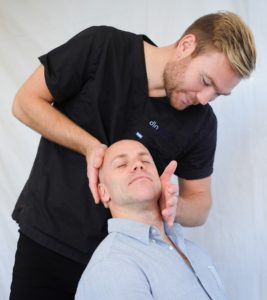The road seems long and intimidating for people recovering after car accidents. With the right team working alongside auto accident victims, the road is manageable. Today, we are discussing the way the car accident healing journey is always evolving and how it began with physical therapy years ago.
The road of recovery after a car accident:
First off, healing after a car accident never looks the same. The road to recovery may not even look the same for two people in the same car accident. This has been an intense learning experience for medical professionals over the years since automobiles hit the road.
Medicine has evolved as well as the automobiles since their first arrival to the roads. Higher speeds are reached than ever before. People ride motor bikes at high speeds. People travel at high speeds in cars too, and sometimes, without wearing a seatbelt. Take a look at our past blog about the importance of wearing seat belts.
Do not let anyone convince you that seat belts do more harm than good. Alternatively, studies have proven seat belts do more good than harm. They are absolutely necessary as well as life-saving.
Remember, if you are in a car accident with other people that are all wearing their seatbelts, you ultimately become a threat to other passengers’ safety. Any unfastened passenger basically becomes a projectile that can seriously injure or kill another person. Years ago, cars did not even have seat belts in stock models straight from the production line.
Seat belts save lives and may prevent fatal injury:
 The National Highway Traffic Safety Administration states that 14,955 lives were saved because of seat belts in 2017. Buckling up prevents passengers from becoming ejects which usually always results in death. The force of an airbag cannot protect you more than a seat belt.
The National Highway Traffic Safety Administration states that 14,955 lives were saved because of seat belts in 2017. Buckling up prevents passengers from becoming ejects which usually always results in death. The force of an airbag cannot protect you more than a seat belt.
Actually, it is quite the opposite. The force of an air bag has the potential to seriously injure or even kill passengers that are not fastened in with a seat belt. Wearing seat belts incorrectly can be more of a threat than not wearing one at all in some scenarios.
Putting a seat belt on under either the left or right arm can put you or other passengers in further danger. The National Highway Traffic Administration also shares that wearing a seat belt while sitting in the front seat of a car can reduce your risk of death by forty-five percent. NHTSA created the first seat belt regulation in 1966.
This federal law took effect in 1968. It required car manufacturers fit seat belts in all vehicles. However, this did not mean states enforced the use of seat belts while riding in cars.
In 1984, New York became the first state to mandate that drivers use a seat belt. The new law increased the use of seat belts from ten to fifty percent. In 1996, all states, except for New Hampshire, made it mandatory for all drivers and front-seat occupants to wear seat belts.
The history of physical therapy:
As we know, physical therapy is a detrimental step in many car accident victim’s road to recovery and thereafter. Now, let’s take a look into the history of physical therapy because it is very informative to know how we got to where we are today. By studying the history, patients and doctors are well informed on why certain methods are used.
 Per Henrik Ling was known as the father of gymnastics. In 1894, he founded the royal Central Institute of Gymnastics. This institute worked in the field of massage, manipulation, and exercise. The term physiotherapy originally comes from the German form physiotherapie in an article written by Dr. Lorenz Gleich in 1851.
Per Henrik Ling was known as the father of gymnastics. In 1894, he founded the royal Central Institute of Gymnastics. This institute worked in the field of massage, manipulation, and exercise. The term physiotherapy originally comes from the German form physiotherapie in an article written by Dr. Lorenz Gleich in 1851.
According to those studying this term, the term evolved from physiotherapie, to physiotherapy, and finally left us with physical therapy. Physiotherapy is often a commonly used term though as the preferred name to use depends on who you are speaking with.
In 1916, world experienced the polio epidemic. In this time, patients with residual paralysis were treated by nurses using passive movements. After physical therapists realized the need for this movement, they developed Manual Muscle Testing which is used to asses the strength of the muscle.
Therefore, muscle re-education techniques for weaker muscles may be implemented. Our former president, Franklin D. Roosevelt, was afflicted by polio. Roosevelt went through various forms of therapy.
During World War I, millions of soldiers were injured. The United States entered the war in 1917 and soon recognized there was plenty of wounded American soldiers that needed therapy. In the 1920s, the relationship between physical therapists and the medical community was strengthened. This boosted public recognition and validation.
Call now:
Next week, we would love to continue to educate readers of the history of physical therapy. Today, we would like to thank you for stopping by. We encourage you to continue to visit for future informative blogs.
Make an appointment today to start, or continue, your physical therapy and chiropractic journey!
Staff Writer



